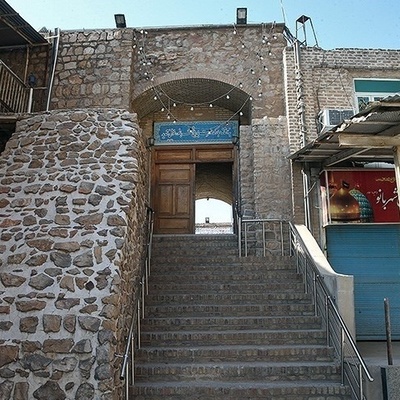SAEDNEWS: Located in Shahmirzad, Iran, the 1,300-year-old “Rostam’s Bow” walnut tree features gracefully curved branches resembling a bow. Named after the legendary hero Rostam, it symbolizes resilience and the link between myth and nature.

Amid Iran’s rich tapestry of natural and historical attractions, some ancient trees have claimed a special place, becoming symbols of endurance and the profound bond between humans and nature.
One of the most remarkable examples of this living heritage is the “Rostam’s Bow” walnut tree in Shahmirzad—a monumental, legendary tree in Semnan Province. It has gained national fame not only for its age and unique form but also for its symbolic connection to the legendary Iranian hero, Rostam. With a history spanning more than 1,300 years, this tree is recognized today as both a natural and cultural treasure of Iran.

Natural Features and Physical Characteristics
The “Rostam’s Bow” walnut tree stands in Shahmirzad, part of the Mahdishahr County in Semnan Province—a region renowned for its temperate mountainous climate, fertile soil, and abundant water resources, making it one of Iran’s finest habitats for walnut trees.
The tree reaches approximately 15 meters in height, with a trunk diameter of around 5 meters. Its expansive canopy casts a broad, cooling shade, offering a natural refuge for locals and visitors during the hot summer months.

The tree features two main branches that curve upward in a graceful arch toward the sky, a form that inspired locals to name it “Rostam’s Bow.” Its sturdy structure and powerful roots testify to its extraordinary resilience against climate changes, drought, cold, and human impact.
Historical Significance of Rostam’s Bow
Although no precise records exist regarding when it was planted, local accounts and field studies estimate the tree’s age at over 1,300 years, suggesting it may have taken root during the Sassanian era or early Islamic period.

This longevity makes the “Rostam’s Bow” not only one of the oldest walnut trees in Iran but also among the oldest in the world. Generations of Shahmirzad farmers have long respected this tree, seeing it as a symbol of blessing, endurance, and the power of nature. Its walnuts have been cherished as a gift of sustenance and divine providence.

In March 2012, the tree was officially registered as a national natural monument of Iran for its historical, ecological, and cultural significance. Since then, Semnan’s Cultural Heritage and Natural Resources Organization has undertaken protective measures, including fencing and scientific maintenance, to safeguard it from natural wear or excessive tourism.
Name and Mythical Connection to Rostam
The poetic name “Rostam’s Bow” reflects three key elements:
Branch Shape: The main branches form a sweeping arch resembling a giant bow, a symbol of strength and heroism in Iranian mythology.
Heroic Association: Rostam, the legendary figure of the Shahnameh, embodies physical power, perseverance, and resilience. Locals see a reflection of these qualities in the tree’s enduring presence.
Longevity and Endurance: Standing for over 13 centuries through droughts, cold, and climate changes, the tree mirrors Rostam’s legendary steadfastness in battle.

Thus, the name evokes both the tree’s physical form and the spirit of heroism and endurance, merging nature with myth and giving the tree a significance beyond its mere existence.
Cultural, Tourism, and Economic Value
Beyond its historical importance, the “Rostam’s Bow” walnut tree plays a vibrant role in tourism. Each year, hundreds of domestic and international visitors travel to Shahmirzad to witness this natural marvel. Its shaded canopy serves as a summer gathering spot, a popular place for photography, storytelling, and relaxation.

Economically, the tree continues to bear fruit, producing sizable, high-quality walnuts annually. Locals often regard its walnuts as symbols of prosperity and may take them home as keepsakes or souvenirs.

The “Rostam’s Bow” walnut tree of Shahmirzad stands as more than an ordinary tree—it is a living emblem of the intertwining of myth, nature, and history in Iran. Having endured over thirteen centuries of wind, snow, drought, and time, it exemplifies life’s resilience within nature. Its name recalls Rostam, Iran’s eternal hero, and its presence signifies steadfastness in the ancient land of Semnan. Today, “Rostam’s Bow” is both a natural treasure and a cultural heritage for all Iranians—a tree rooted in history, its branches stretching ambitiously toward the sky.

